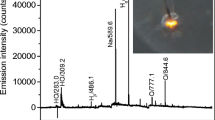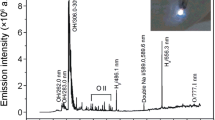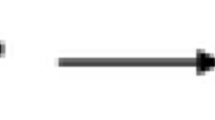Abstract
Reusability and selective adsorption toward Pb2+ with the coexistence of Cd2+, Co2+, Cu2+ and Ni2+ ions on chitosan/P(2-acrylamido-2-methyl-1-propanesulfonic acid-co-acrylic acid) [CS/P(AMPS-co-AA)] hydrogel, a multi-functionalized adsorbent containing –NH2, –OH, –COOH and –SO3H groups was studied. The CS/P(AMPS-co-AA) was prepared in aqueous solution by a simple one-step procedure using glow discharge electrolysis plasma technique. The reusability of adsorbent in HNO3, EDTA-2Na and EDTA-4Na was investigated in detail. The competitive adsorption of the metal ions at the initial stage was compared between their equal mass concentration and equal molar concentration. In addition, the adsorption mechanism of the adsorbent for adsorption of Pb2+ was also analyzed by XPS. The results showed that the optimum pH of adsorption was 4.8, and time of adsorption equilibrium was about 180 min. Adsorption kinetics fitted well in the pseudo second-order model. The equilibrium adsorption capacities of Pb2+, Cd2+, Co2+, Cu2+, and Ni2+ at pH 4.8 were obtained as 673.3, 358.3, 176.7, 235.0 and 171.7 mg g−1, in their given order. The adsorbent displayed an excellent reusability using 0.015 mol L−1 EDTA-4Na solution as the eluent, and the desorption ratio could not correctly reflect the true characteristics of adsorption/desorption process. Moreover, the adsorbent showed good adsorption selectivity for Pb2+. The molar adsorption capacity at the initial stage with equal molar concentration was more reliable than the mass adsorption capacity during the study of selective adsorption. According to the XPS results, the adsorption of Pb2+ ions by the CS/P(AMPS-co-AA) absorbent could be attributed to the coordination between N atom and Pb2+ and ion-exchange between Na+ and Pb2+.






Similar content being viewed by others
References
Liu YM, Ju XJ, Xin Y, Zheng WC, Wang W, Wei J, Xie R, Liu Z, Chu LY (2014) A novel smart microsphere with magnetic core and ion-recognizable shell for Pb2+ adsorption and separation. ACS Appl Mater Interfaces 6:9530–9542
Gunathilake C, Kadanapitiye MS, Dudarko O, Huang SD, Jaroniec M (2015) Adsorption of lead ions from aqueous phase on mesoporous silica with P-containing pendant groups. ACS Appl Mater Interfaces 7:23144–23152
Ali I (2012) New generation adsorbents for water treatment. Chem Rev 112:5073–5091
Ali I (2014) Water treatment by adsorption columns: evaluation at ground level. Sep Purif Rev 43:175–205
van Kuringen HPC, Eikelboom GM, Shishmanova IK, Broer DJ, Schenning APHJ (2014) Responsive nanoporous smectic liquid crystal polymer networks as efficient and selective adsorbents. Adv Funct Mater 24:5045–5051
Ali I, Gupta VK (2006) Advances in water treatment by adsorption technology. Nat Protoc 1:2661–2667
Li K, Wang Y, Huang M, Yan H, Yang H, Xiao S, Li A (2015) Preparation of chitosan-graft-polyacrylamide magnetic composite microspheres for enhanced selective removal of mercury ions from water. J Colloid Interface Sci 455:261–270
Pan YF, Cai PX, Farmahini-Farahani M, Li YD, Hou XB, Xiao HN (2016) Amino-functionalized alkaline clay with cationic star-shaped polymer as adsorbents for removal of Cr(VI) in aqueous solution. Appl Surf Sci 385:333–340
Wang X, Chung YS, Lyoo WS, Min BG (2006) Preparation and properties of chitosan/poly(vinyl alcohol) blend foams for copper adsorption. Polym Int 55:1230–1235
Zhou L, Shang C, Liu Z, Huang G, Adesina AA (2012) Selective adsorption of uranium(VI) from aqueous solutions using the ion-imprinted magnetic chitosan resins. J Colloid Interface Sci 366:165–172
Petrova YS, Pestov AV, Usoltseva MK, Neudachina LK (2015) Selective adsorption of silver(I) ions over copper(II) ions on a sulfoethyl derivative of chitosan. J Hazard Mater 299:696–701
Zhang M, Helleur R, Zhang Y (2015) Ion-imprinted chitosan gel beads for selective adsorption of Ag+ from aqueous solutions. Carbohydr Polym 130:206–212
Zhang M, Zhang Y, Helleur R (2015) Selective adsorption of Ag+ by ion-imprinted O-carboxymethyl chitosan beads grafted with thiourea-glutaraldehyde. Chem Eng J 264:56–65
Lin S, Wei W, Wu X, Zhou T, Mao J, Yun YS (2015) Selective recovery of Pd(II) from extremely acidic solution using ion-imprinted chitosan fiber: adsorption performance and mechanisms. J Hazard Mater 299:10–17
Chen X, Lam KF, Mak SF, Yeung KL (2011) Precious metal recovery by selective adsorption using biosorbents. J Hazard Mater 186:902–910
Li K, Gao Q, Yadavalli G, Shen X, Lei H, Han B, Xia K, Zhou C (2015) Selective adsorption of Gd3+ on a magnetically retrievable imprinted chitosan/carbon nanotube composite with high capacity. ACS Appl Mater Interfaces 7:21047–21055
Yan H, Dai J, Yang Z, Yang H, Cheng R (2011) Enhanced and selective adsorption of copper(II) ions on surface carboxymethylated chitosan hydrogel beads. Chem Eng J 174:586–594
Li X, Wang Z, Li Q, Ma J, Zhu M (2015) Preparation, characterization and application of mesoporous silica-grafted graphene oxide for highly selective lead adsorption. Chem Eng J 273:630–637
Laus R, Costa TG, Szpoganicz B, Favere VT (2010) Adsorption and desorption of Cu(II), Cd(II) and Pb(II) ions using chitosan crosslinked with epichlorohydrin-triphosphate as the adsorbent. J Hazard Mater 183:233–241
Vetriselvi V, Santhi RJ (2015) Redox polymer as an adsorbent for the removal of chromium(VI) and lead(II) from the tannery effluents. Water Resour Ind 10:39–52
Wan Ngah WS, Teong LC, Toh RH, Hanafiah MAKM (2012) Utilization of chitosan-zeolite composite in the removal of Cu(II) from aqueous solution: adsorption, desorption and fixed bed column studies. Chem Eng J 209:46–53
Xu YY, Dang QF, Liu CS, Yan JQ, Fan B, Cai JP, Li JJ (2015) Preparation and characterization of carboxyl-functionalized chitosan magnetic microspheres and submicrospheres for Pb2+ removal. Colloid Surf A 482:353–364
Zhang Y, Qu RJ, Sun CM, Ji CN, Chen H, Yin P (2015) Improved synthesis of silica-gel-based dendrimer-like highly branched polymer as the Au(III) adsorbents. Chem Eng J 270:110–121
Chen AH, Yang CY, Chen CY, Chen CW (2009) The chemically crosslinked metal-complexed chitosans for comparative adsorptions of Cu(II), Zn(II), Ni(II) and Pb(II) ions in aqueous medium. J Hazard Mater 163:1068–1075
Yu J, Li Y, Lu QF, Zheng JD, Yang SX, Jin F, Wang QZ, Yang W (2016) Synthesis, characterization and adsorption of cationic dyes by CS/P(AMPS-co-AM) hydrogel initiated by glow-discharge-electrolysis plasma. Iran Polym J 25:423–435
Yu J, Zhang HT, Li Y, Lu QF, Wang QZ, Yang W (2016) Synthesis, characterization, and property testing of PGS/P(AMPS-co-AM) superabsorbent hydrogel initiated by glow-discharge electrolysis plasma. Colloid Polym Sci 294:257–270
Yu J, Yang GG, Pan YP, Lu QF, Yang W, Gao JZ (2014) Poly(acrylamide-co-acrylic acid) hydrogel induced by glow-discharge-electrolysis plasma and its adsorption properties for cationic dyes. Plasma Sci Technol 16:767–776
Heidari A, Younesi H, Mehraban Z, Heikkinen H (2013) Selective adsorption of Pb(II), Cd(II), and Ni(II) ions from aqueous solution using chitosan-MAA nanoparticles. Int J Biol Macromol 61:251–263
Li Z, Xiao D, Ge Y, Koehler S (2015) Surface-functionalized porous lignin for fast and efficient lead removal from aqueous solution. ACS Appl Mater Interfaces 7:15000–15009
Kabiri S, Tran DN, Azari S, Losic D (2015) Graphene-diatom silica aerogels for efficient removal of mercury ions from water. ACS Appl Mater Interfaces 7:11815–11823
Bessbousse H, Verchère JF, Lebrun L (2012) Characterisation of metal-complexing membranes prepared by the semi-interpenetrating polymer networks technique: application to the removal of heavy metal ions from aqueous solutions. Chem Eng J 187:16–28
Chen CY, Chen SY (2004) Adsorption properties of a chelating resin containing hydroxy group and iminodiacetic acid for copper ions. J Appl Polym Sci 94:2123–2130
Koong LF, Lam KF, Barford J, McKay G (2013) A comparative study on selective adsorption of metal ions using aminated adsorbents. J Colloid Interface Sci 395:230–240
Irving H, Williams RJP (1948) Order of stability of metal complexes. Nature 162:746–747
Irving H, Williams RJP (1953) The stability of transition-metal complexes. J Chem Soc 8:3192–3210
Bayramoglu G, Yakup AM, Bektas S (2007) Removal of Cd(II), Hg(II), and Pb(II) ions from aqueous solution using P(HEMA/chitosan) membranes. J Appl Polym Sci 106:169–177
Wang WB, Huang DJ, Kang YR, Wang AQ (2013) One-step in situ fabrication of a granular semi-IPN hydrogel based on chitosan and gelatin for fast and efficient adsorption of Cu2+ ion. Colloids Surf B 106:51–59
Li ZY, Li TT, An LB, Liu H, Gu LN, Zhang ZM (2016) Preparation of chitosan/polycaprolactam nanofibrous filter paper and its greatly enhanced chromium(VI) adsorption. Colloids Surf A 494:65–73
Wan Ngah WS, Fatinathan S (2010) Pb(II) biosorption using chitosan and chitosan derivatives beads: equilibrium, ion exchange and mechanism studies. J Environ Sci 22:338–346
Lu QF, Yu J, Gao JZ, Yang W, Li Y (2011) Glow-discharge electrolysis plasma induced synthesis of polyvinylpyrrolidone/acrylic acid hydrogel and its adsorption properties for heavy-metal ions. Plasma Process Polym 8:803–814
Acknowledgements
This work was supported by National Natural Science Foundation of China (Nos. 21367023, 21567025 and 11564037).
Author information
Authors and Affiliations
Corresponding authors
Electronic supplementary material
Below is the link to the electronic supplementary material.
Rights and permissions
About this article
Cite this article
Yu, J., Zheng, J., Lu, Q. et al. Reusability and selective adsorption of Pb2+ on chitosan/P(2-acrylamido-2-methyl-1-propanesulfonic acid-co-acrylic acid) hydrogel. Iran Polym J 25, 1009–1019 (2016). https://doi.org/10.1007/s13726-016-0487-8
Received:
Accepted:
Published:
Issue Date:
DOI: https://doi.org/10.1007/s13726-016-0487-8




